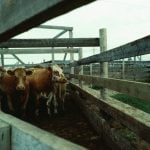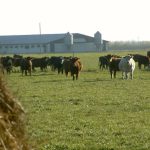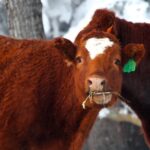
Tag Archives cattle breeding

Mongolian company turns to Canada for agricultural expertise
Mongolia is behind in technology, but borders on huge markets, motivating those working in agriculture to learn as much as they can

Kansas professor highlights role of genetics in the sustainable cow herd
Breeding and selecting beef cattle that fit an operation’s environment benefits a producer’s bottom line and scores sustainability points

Using reproductive tract scoring to pick replacement heifers
A project at the Livestock and Forage Centre of Excellence is comparing conception rates of replacements to earlier reproductive tract scores

What to consider when changing the breeding season
Producers tightening or shifting their breeding season should consider everything from economics to feeding programs

Alberta investment firm acquires Australian cattle portfolio
This is AIMCo's second agricultural acquisition 'down under' in the last two years

Essentials for profitable ranching: Part one
What makes a profitable ranch? Burke Teichert introduces his five ‘essentials’ and unpacks the first two
Simmental breeder recognized, B.C. breeders awarded
Purely Purebred, news from the March 2023 issue of Canadian Cattlemen

Picking replacement heifers
Research on the Record with Reynold Bergen

Feeding decisions are important breeding decisions
Research on the Record with Reynold Bergen

Driving profit through cattle genetics on the ranch
Breeding: News Roundup from the March 2021 issue of Canadian Cattlemen



